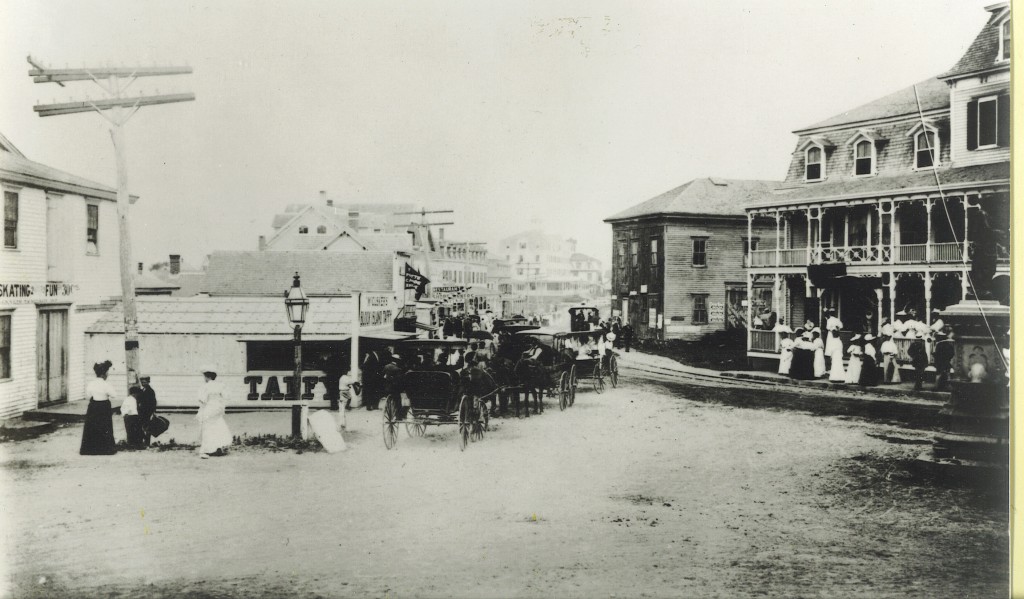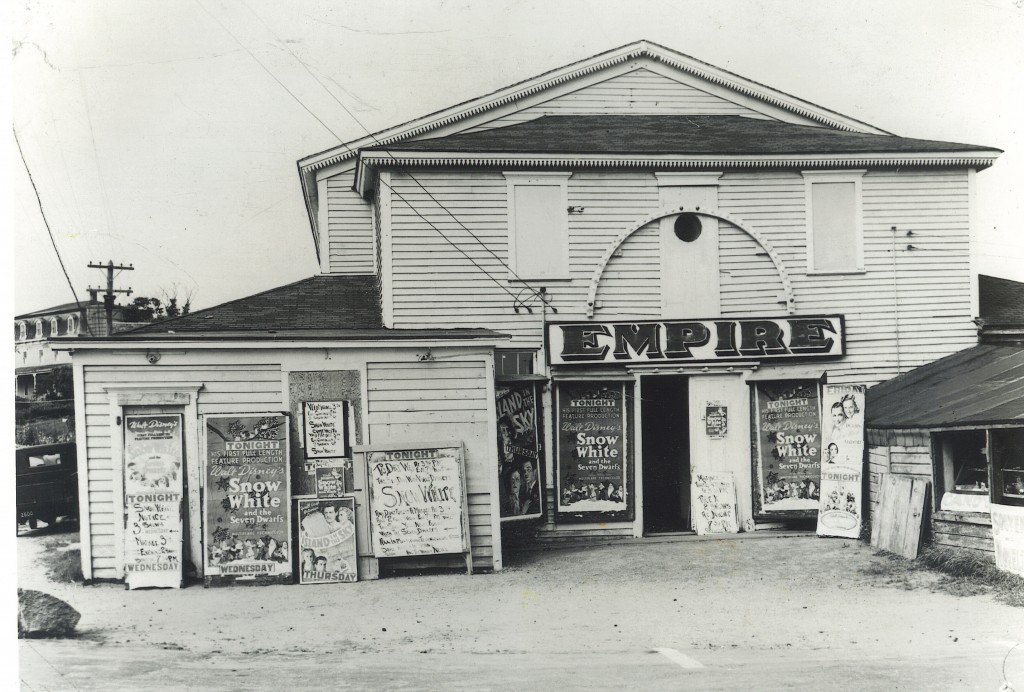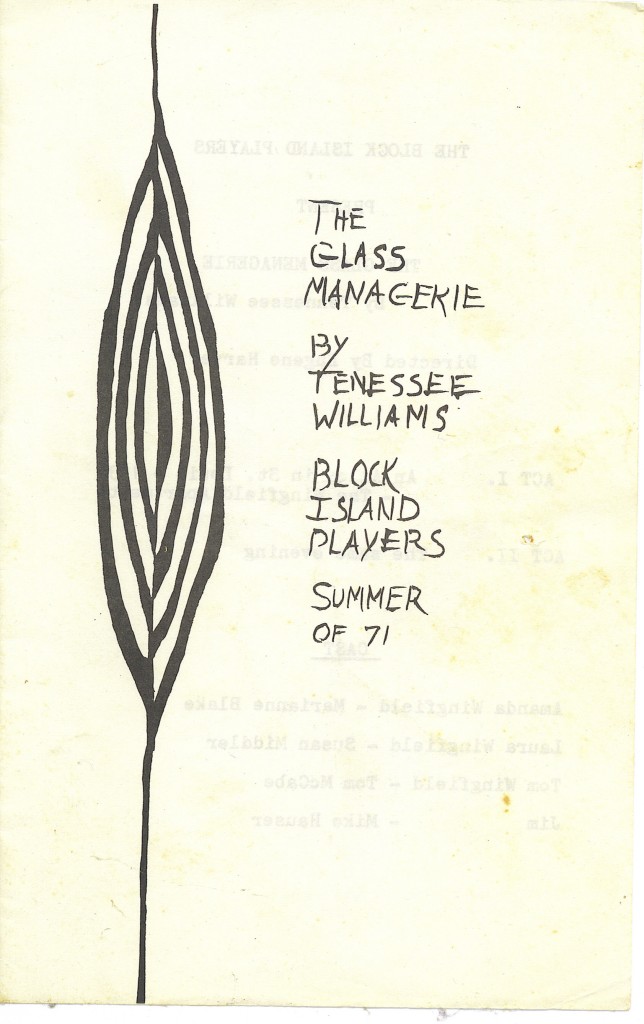
View down Water Street in the late 1880s when the building housed the roller-skating rink. Block Island Taffy was produced and served to the right of the future Empire Theatre.
A Sanborn-Perris Insurance Company map of Water Street from 1897 notes the building was formerly a roller-skating rink and its current uses in 1897 as a church, ballroom, and storage.
Live performances of plays graced the stage of the Empire in the first decade of the 20th Century, allowing for Block Island residents and summer visitors to experience plays being enjoyed at many other locations across the United States.

One of the few American industries that expanded in the Depression was the film industry that produced movies that helped Americans dream. This shot shows the Empire Theatre advertising Snow White, one of Disney’s contributions to animated film history.
Movies shown in the 1930s included Disney’s first full-length color animated film Snow White, released in 1937. Hollywood soon followed with the 1939 classic that forever entered American folklore with The Wizard of Oz.
During this period the building to the left of the theater was called Muriel’s Snack Shop. Students from the Block Island School on High Street were allowed to leave school for lunch and ate at what they called “Dirty Gerties”

The playbill from The Glass Menagerie written by Tennessee Williams presented by the Block Island Players at the Empire Theatre.
Despite the resurgence in live performances the Empire continued to decline and was opened sporadically in the late 1970s and early 1980s. By the middle of the 1980s the Empire closed it’s doors.
The current owner Gary Pollard purchased the derelict building in 1986 and completed a number of large renovations. These included the cleaning up of graffiti, the shoring up of the foundation under the theater, and the rebuilding of the Taffy building to the right of the Empire entrance. The theater first opened its doors under Pollard’s stewardship in 1993 and showed the movie Alive. In 1993 Fairy Tale Theater started. Directed by Emily Reeve this gave children a chance to act in some of the classic fairy tales.
Today the Empire stands as a one of the very few classic movie theaters remaining in the United States. Over the years her entertainment purposes have changed mirroring the contrasting American love with live performances and film. She still serves as an anchor on Water Street of what Block Island was and also as a proud example of historic preservation at is finest.